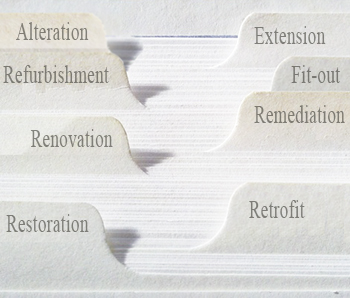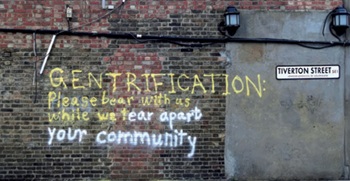Post brexit, house building and construction remains a safe sustainable industry
The result of the 23rd June EU referendum sent shockwaves through both the business and political landscapes. Long standing political careers have come to a shuddering conclusion, with resignations coming from all sides as those responsible for running the country showed themselves to be unwilling or unable to adopt to a new era.
It's not just the politicians who have been tumbling either. Housebuilder shares have fallen sharply, with some well-established firms posting share price drops of 24% in the direct wake of the vote.
Shares slumped further when figures from the latest Markit/CIPS UK Construction PMI index showed that construction in June fell to 46, falling beneath the neutral 50 mark for the first time since April 2013, as influential spending decisions were delayed in the run up to the referendum.
With economic uncertainty looming over the industry and with potentially billions being culled off the values of homebuilders and contractors, what do the industry leaders need to do to ensure its security?
We have previously predicted a slowdown in construction, largely due to punitive changes made to the tax regime dampening the residential sector and London in particular. However, some of the panic measures being taken seem a little overdone to us, with parts of the industry already reacting and showing signs of contraction. Evidence is showing that high ranking architect firms have already started making cut backs, laying off staff in the wake of the Referendum vote.
The post referendum disruption is likely to last for at least two years as the government instigates the fabled Article 50. Borrowing costs (for the government as well as individuals) are at an all-time low, which is making controversial investments like HS2 and the third Heathrow runway in fact more viable, despite fears.
Whichever way the vote had gone; investment would still have been needed in infrastructure projects that the country desperately needs most notably the housing market.
Mark Carnie recently released £150bn in addition lending collateral to help reinvigorate the economy after it showed clear signs of slowing in a post referendum Britain. With the Government still aiming for that magical million home target before the next general election, continued investment in housing, house builders and infrastructure remains pivotal in helping to maintain not only industry growth, but economic growth and stability too.
The industry voiced concerns over access to migrant labour becoming difficult if the public voted to leave the European Union. After the last recession, some 400,000 people left the construction industry never to return. Were the government to allow a sharp contraction in construction to take hold, even more labour would be lost with no ready means of replacing them.
So how does the industry best attract investors, both national and international. Frankly, they need to keep on doing what they've been doing for the last few years. Market analysis reports from 2015 showed that construction was growing and that the housing market was up 4% year on year from 2009.
Financial institutions love stability and during times of uncertainly and change, the use of innovative and exciting new technologies and practices remains one of the best ways in achieving it. Reducing risk and adding value are two key factors that need to be maintained, more so during times of economic uncertainly.
The TenderSpace ToolBox was built around these two pillars and by reducing risk and adding value to any project, no matter what the size, the industry will be able to reap the benefits of smarter and better working to enter post EU Britain in a stronger position than when David Cameron first announced that the country was being allowed to decide its future.
Find out more
Related articles on Designing Buildings Wik
- Architects' Brexit statement.
- Brexit.
- Brexit - the case for infrastructure.
- Brexit Topic Guide.
- BSRIA Brexit white paper.
- BSRIA calls for clarity following Brexit Article 50 High Court ruling.
- BSRIA response to Brexit speech.
- BSRIA response to Brexit white paper.
- HVAC and smart energy post-Brexit.
- Overcoming the challenges of Brexit.
- Post-Brexit vision for construction.
- Triggering article 50 of the Treaty of Lisbon.
- What does Brexit mean for construction?
Featured articles and news
A five minute introduction.
50th Golden anniversary ECA Edmundson apprentice award
Showcasing the very best electrotechnical and engineering services for half a century.
Welsh government consults on HRBs and reg changes
Seeking feedback on a new regulatory regime and a broad range of issues.
CIOB Client Guide (2nd edition) March 2025
Free download covering statutory dutyholder roles under the Building Safety Act and much more.
AI and automation in 3D modelling and spatial design
Can almost half of design development tasks be automated?
Minister quizzed, as responsibility transfers to MHCLG and BSR publishes new building control guidance.
UK environmental regulations reform 2025
Amid wider new approaches to ensure regulators and regulation support growth.
The maintenance challenge of tenements.
BSRIA Statutory Compliance Inspection Checklist
BG80/2025 now significantly updated to include requirements related to important changes in legislation.
Shortlist for the 2025 Roofscape Design Awards
Talent and innovation showcase announcement from the trussed rafter industry.
OpenUSD possibilities: Look before you leap
Being ready for the OpenUSD solutions set to transform architecture and design.
Global Asbestos Awareness Week 2025
Highlighting the continuing threat to trades persons.
Retrofit of Buildings, a CIOB Technical Publication
Now available in Arabic and Chinese aswell as English.
The context, schemes, standards, roles and relevance of the Building Safety Act.
Retrofit 25 – What's Stopping Us?
Exhibition Opens at The Building Centre.
Types of work to existing buildings
A simple circular economy wiki breakdown with further links.
A threat to the creativity that makes London special.























